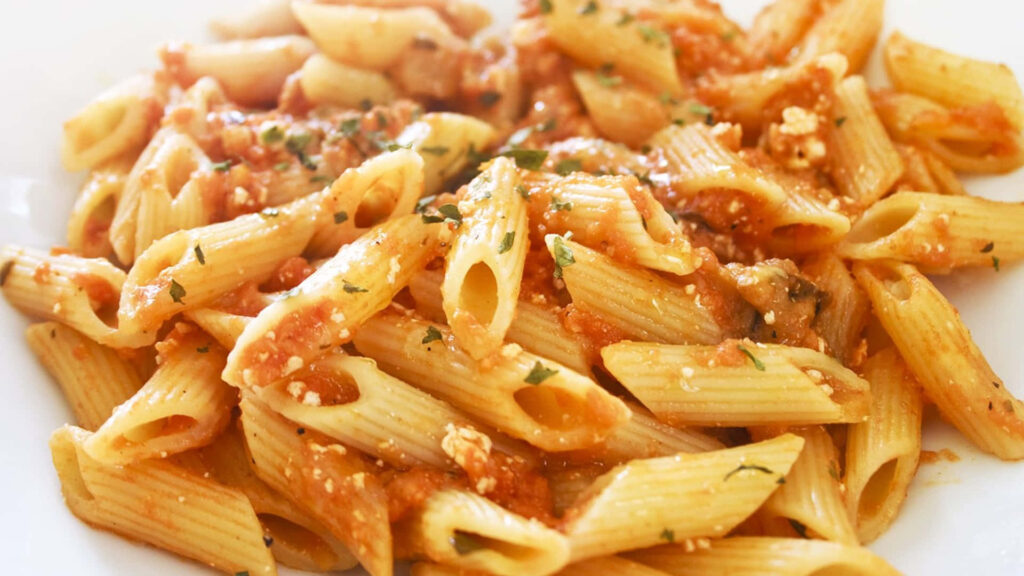Pasta is a staple food that is enjoyed by many people around the world. Whether it’s spaghetti, penne, or fusilli, pasta is a versatile ingredient that can be used in a variety of dishes. If you find yourself with leftover cooked pasta or if you want to prepare a large batch in advance, you may be wondering how long pasta can last in the fridge. In this comprehensive guide, we will explore the shelf life of pasta, the best storage practices, and how to tell if your pasta has gone bad.
Shelf Life of Pasta in the Fridge:
Cooked pasta can generally be stored in the refrigerator for 3 to 5 days. This timeframe applies to both homemade pasta and store-bought varieties. It’s important to note that the texture and quality of the pasta may deteriorate over time, so it’s best to consume it within the first couple of days for the best taste and texture. If you have a sauce or other ingredients mixed with the pasta, the shelf life may be shorter, as these additional ingredients can spoil more quickly.
Storing Pasta in the Fridge:
To maximize the shelf life of your cooked pasta, it’s essential to store it properly in the refrigerator. Here are some tips to ensure your pasta stays fresh:
- Allow the pasta to cool: Before storing the pasta, allow it to cool down to room temperature. This helps prevent condensation from forming inside the container, which can lead to moisture buildup and potential spoilage.
- Use airtight containers: Transfer the cooked pasta to airtight containers or resealable plastic bags. Make sure to remove as much air as possible before sealing. Airtight containers prevent odors from other foods in the fridge from being absorbed by the pasta and also help maintain its texture.
- Separate the sauce: If you have pasta with sauce, consider storing them separately. This allows you to reheat the pasta without the sauce if desired, and it can also extend the shelf life of the sauce, as it may spoil faster than the pasta.
- Label and date: It’s a good practice to label the container with the date of storage. This way, you can easily track how long the pasta has been in the fridge and avoid consuming it past its recommended shelf life.
Signs of Spoiled Pasta:
While pasta can last several days in the fridge, it’s crucial to be able to recognize when it has gone bad. Here are some signs that your pasta may have spoiled:
- Off smell: If your pasta has a sour or unpleasant odor, it’s likely an indication that it has spoiled. Fresh pasta should have a neutral or slightly wheaty smell.
- Mold or discoloration: If you notice any mold growth or significant discoloration on the pasta, it’s best to discard it. Mold can produce toxins that are harmful if consumed.
- Slimy texture: Cooked pasta that feels slimy or overly soft to the touch is a sign of spoilage. Fresh pasta should have a firm and slightly chewy texture.
- Off taste: If the pasta tastes off or has a strange flavor, it’s best not to consume it. Trust your senses and discard any pasta that doesn’t taste right.
Using Leftover Pasta:
If you find yourself with leftover cooked pasta that is nearing the end of its shelf life, there are several ways you can utilize it:
- Reheat and serve: Simply reheating the pasta in the microwave or on the stovetop can revive it. Add some fresh sauce or sauté it with vegetables for a quick and easy meal.
- Incorporate into salads: Cold pasta can be a great addition to salads. Combine it with fresh vegetables, protein, and dressing for a refreshing pasta salad.
- Make frittatas or omelets: Leftover pasta can be used in frittatas or omelets. Mix it with beaten eggs, vegetables, and cheese, then cook it on the stovetop or in the oven for a delicious and filling meal.
- Create pasta bakes: Layer leftover pasta with sauce, cheese, and other ingredients in a baking dish to create a pasta bake. Bake it in the oven until the cheese is melted and bubbly for a comforting and hearty meal.
Conclusion:
In conclusion, cooked pasta can last in the fridge for 3 to 5 days when stored properly. Remember to cool the pasta before refrigerating it, use airtight containers, and separate any sauce or additional ingredients. Be mindful of the signs of spoilage, such as an off smell, mold growth, slimy texture, or off taste. If your pasta shows any of these signs, it’s best to discard it. However, if your pasta is still fresh, you can get creative with leftovers by reheating, incorporating into salads, making frittatas, or creating pasta bakes. Enjoy your pasta while it’s at its best, and savor the delicious meals you can create with this versatile ingredient.
- How Long Does Pasta Last in the Fridge? - July 11, 2023

